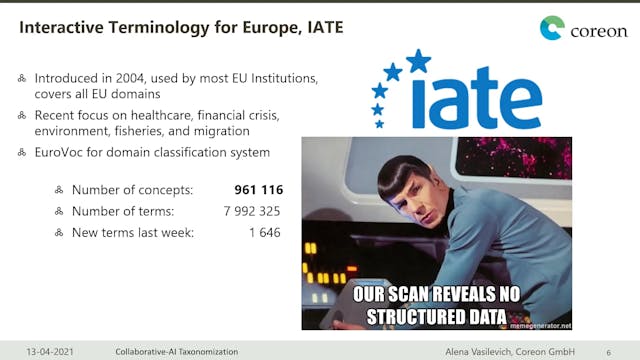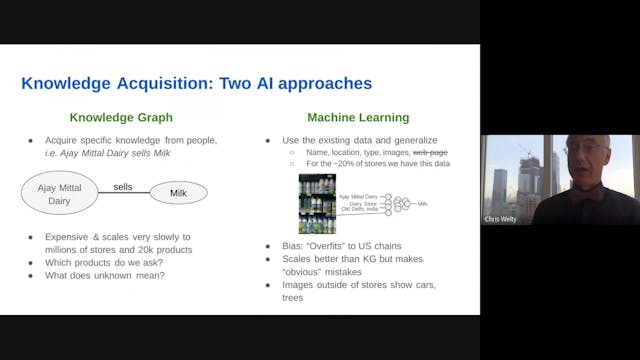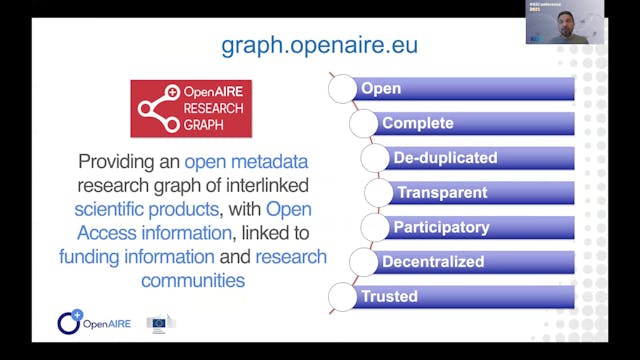Ryan Wisnesky | How To Optimally Merge Knowledge Graphs With Category Theory
KGC 2021
•
19m
In this talk we describe a new technique for merging knowledge graphs: translating the knowledge graph schemas into categories and the knowledge graph data into functors, then applying the "co-limit/pushout" construction from a branch of mathematics called category theory to merge these categories and functors, and then converting the categories and functors back into knowledge graph schemas and data. We show how this process is mathematically optimal (results in the highest possible data quality in the merge), and describe several real-world use cases of knowledge graph merge that have been implemented in an open-source tool.
Up Next in KGC 2021
-
Alena Vasilevich | Benefits Of Collab...
In the realm of data-driven businesses, structured data, being highly organized and easily understood by machines, is a valuable resource. IATE, with almost one million concepts storing multilingual terms and metadata, holds a large part of the textual knowledge of the EU. However, it can only be...
-
Chris Welty | Shopping Sense: Bringin...
Knowledge Graphs (KGs) continue to penetrate the industrial world after Google's famous "things not strings" was used to explain their acquisition of FreeBase ten years ago. While many KGs exist, they are by and large little more than "entity catalogs", missing entirely the links between those e...
-
Paolo Manghi | The OpenAIRE Research ...
The presentation will introduce the motivations, architecture, and operation of the OpenAIRE Research Graph (http://graph.openaire.eu), one of the largest (if not the largest) public, open access, collections of metadata and semantic links (~1Bi) between research-related entities: articles (124M+...



